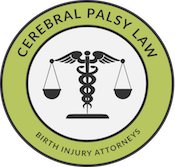How Birth Injuries Cause Spastic Cerebral Palsy (CP)
Spastic cerebral palsy (CP), which occurs in 70% – 90% of all diagnosed cases of cerebral palsy, is the most common type of cerebral palsy. Spastic cerebral palsy is characterized by spasticity, which involves stiffness, muscular tension (hypertonia), muscle spasms, arthritis, and high muscle tone. The muscular tension characteristic of spastic cerebral palsy often results in a range of mobility impairments and limitations. Many individuals with spastic cerebral palsy have a hard time walking, moving, exercising motor control, eating, and speaking.
Like all forms of cerebral palsy, spastic cerebral palsy is caused by some injury to the developing brain. Many babies suffer a brain injury just before, during, or right after birth that leads to brain damage and cerebral palsy. Throughout this page, our Detroit, Michigan cerebral palsy lawyers will discuss the relationship between spastic cerebral palsy and birth injuries and explain how instances medical malpractice can lead to cerebral palsy and related lifelong impairments. Should you have any legal questions or case inquiries, we encourage you to reach out to our birth injury attorneys for a free legal consultation. Our legal team is available to speak with you 24/7.
The Relationship between Spastic Cerebral Palsy and Traumatic Birth Injuries
As we already know, spasticity is caused by damage to the developing brain of a child or baby. A wide variety of complications related to pregnancy, labor, and delivery can, without proper medical attention, cause neonatal brain damage and cerebral palsy. Spastic cerebral palsy is most commonly the result of neonatal oxygen deprivation and/or direct head trauma. When a fetus or baby suffers from asphyxia, infection, hemorrhages, or trauma, the motor cortex is in danger. The motor cortex is the area of the brain that controls movement, planning, and control of voluntary movements. These damaged areas of the central nervous system send responses to the body that result in muscular tension, movement impairments, and spasticity. In individuals with spastic cerebral palsy, opposing muscle groups activate simultaneously, resulting in poor coordination and limited movement. In the next section, we’ll discuss which specific birth injuries can cause infant brain damage and spastic cerebral palsy.
The Causes of Spastic Cerebral Palsy
- Fetal Oxygen Deprivation and Hypoxic Ischemic Encephalopathy (HIE): When a baby suffers oxygen deprivation in the womb, during delivery, or just after delivery, he or she is at a great risk for brain damage and spastic cerebral palsy. A common fetal and neonatal brain injury caused by a shortage of oxygen and blood flow is called hypoxic ischemic encephalopathy (HIE). Below we’ve listed some of the many known causes of fetal oxygen deprivation and hypoxic ischemic encephalopathy.
- Prolonged Labor: Strained, arrested, and prolonged labor often leads to prolonged periods of oxygen deprivation for the fetus.
- Uterine Rupture: Uterine tearing can limit fetal oxygen intake in two ways. For one, the mother can lose so much blood that blood flow to the baby is severely compromised. Secondly, uterine rupture may cause the placenta to detach from the mother’s body and circulation (ultimately lessening the flow of oxygenated blood to the baby). Uterine rupture is particularly common in Vaginal Birth after Cesarean (VBAC) deliveries.
- Anesthesia Errors: When the mother is given incorrect doses of anesthesia, she is at a greater risk for blood pressure complications. Maternal blood pressure issues directly affect the baby’s intake of oxygenated blood.
- Neonatal Respiratory Mistakes: Medical professionals are obligated to provide proper respiratory care for babies after they are born. Mistakes related to surfactant, ventilation, and apnea can lead to hypoxic ischemic encephalopathy and oxygen deprivation.
- Placental Previa: In some pregnancies, the placenta grows so close to the uterine opening that it partially or completely blocks birth canal’s opening. Its resultant complications often lead to fetal oxygen deprivation.
- Placental Abruption: Separation of the placenta from the uterus can limit oxygen flow to the baby
- Umbilical Cord Complications: The umbilical cord carries important oxygen, blood, and nutrients to the baby, so any interference to its function can lead to hypoxic ischemic encephalopathy. The following umbilical cord problems can lead to HIE and spastic cerebral palsy:
- Umbilical cord prolapse
- Umbilical cord compression
- True Knots
- Short Cords
- Nuchal Cords
- C-Section Mistakes: The failure to quickly deliver a fetus in distress via emergency C-section can cause prolonged periods of fetal oxygen deprivation, hypoxic ischemic encephalopathy (HIE), and resultant spastic cerebral palsy.
- Fetal Stroke
- Intracranial Hemorrhages (Brain Bleeds): Traumatic deliveries can result in damage to and bleeding within the baby’s head and brain. There are many causes and risk factors for intracranial hemorrhages—some include the misuse of vacuum extractors and forceps, overuse of Pitocin or Cytotec, cephalopelvic disproportion, malpresentation, and shoulder dystocia.
- Premature Rupture of Membranes (PROM): Premature rupture of the chorion and amniotic sac can lead to fetal infection and premature delivery, which both can cause oxygen deprivation and hypoxic ischemic encephalopathy.
- Premature Birth: Because a fetus’ lungs mature between 32 and 34 weeks, premature babies may lose oxygen flow to the brain and develop hypoxic ischemic encephalopathy.
- Low Amniotic Fluid Levels: Oligohydramnios is a pregnancy complication characterized by low amniotic fluid levels. Oligohydramnios is related to cord compression, fetal growth restriction, placental abruption, and placental insufficiency, which all compromise a fetus’ oxygen intake.
- Maternal and Infant Infections: A pregnant mother with an infection can easily transmit her infection to the fetus. Some dangerous maternal infections that can cause spastic cerebral palsy include chorioamnionitis, villitis, Group B Streptococcus (GBS), urinary tract infections (UTIs), bacterial vaginosis (BV), herpes simplex virus (HSV), E. coli, and staph infections. Maternal infections can cause a decrease in the flow of oxygenated blood to the fetus’ body and brain. Additionally, they can result in sepsis, a dangerous infection that can develop in the baby’s bloodstream. Sepsis can cause brain damage, central nervous system damage, meningitis, brain damage, spinal cord damage, septic shock, and even death.
Detecting Spastic Cerebral Palsy: Signs, Symptoms, and Diagnosis
What Are the Early Signs of Spastic Cerebral Palsy?
Detecting and diagnosing spastic cerebral palsy early in a child’s life is important for his or her rehabilitative potential. Although it is often difficult to detect early signs for spastic cerebral palsy, any person who spends time with a baby or child should be on the lookout for various signs of the condition. Early signs for spastic cerebral palsy may include neonatal seizures, bodily stiffness, floppiness or hypotonia, the failure to breathe right after delivery, and low APGAR scores.
What Are the Late Signs of Spastic Cerebral Palsy?
Some children aren’t diagnosed with spastic cerebral palsy until they miss developmental milestones later in life. Common signs for spastic cerebral palsy that can be detected later in a child’s life include muscular tightness, spasticities, abnormal gait (commonly the scissor gait), poor bodily control, poor balance, problems sitting up, abnormal reflexes, abnormal muscle tone, and decreased muscle mass. Most children are diagnosed with spastic cerebral palsy by the time they turn five.
Five Types of Spastic Cerebral Palsy
Spastic cerebral palsy is one of four main classifications of cerebral palsy based on motor type. Spastic cerebral palsy, ataxic cerebral palsy, athetoid cerebral palsy, and mixed cerebral palsy are part of the motor control system of classification, which explains how different affected brain regions impair an individual’s movement. A different way to classify cerebral palsy is based on limb involvement. Below, we’ll discuss five subcategories of spastic cerebral palsy based on which limbs are affected.
- Spastic Hemiplegia: Spastic hemiplegia affects one side of the body. In cases of spastic hemiplegia, brain damage in one side of the brain affects movement on the other side of the body.
- Spastic Monoplegia: Individuals with spastic monoplegia have one affected limb.
- Spastic Diplegia: Spastic diplegia affects the lower extremities. Many individuals with spastic diplegia can walk, but have abnormal gait and require adaptive equipment to commute.
- Spastic Triplegia: Individuals with spastic triplegia have three affected limbs.
- Spastic Quadriplegia: Spastic diplegia affects all four limbs. People with spastic diplegia generally have very tight muscles and often are not able to walk. Spastic quadriplegia is often accompanied by hemiparetic tremors, which are uncontrollable tremors that impair normal limb movement. Tremors, spasticity, and movement limitations often lead to tendinitis and arthritis.
Legal Help for Spastic Cerebral Palsy and Birth Injuries
Detroit, Michigan Birth Injury Attorneys Making a Difference
If your loved one was diagnosed with spastic cerebral palsy or another disabling condition as the result of medical malpractice, we encourage you to contact our Detroit, Michigan birth injury attorneys. With over 50 years of joint experience in the field of birth injury litigation, our attorneys have the specific, extensive knowledge necessary to win birth trauma cases. This year alone, hundreds of children will be diagnosed with spastic cerebral palsy as the result of medical malpractice. Unfortunately, few of their families will take the steps to secure compensation necessary for rehabilitation, health care procedures, and lifestyle adjustments. Contact Michigan Cerebral Palsy Attorneys in any of the following ways and our legal team will provide you with a free case review. You may call our offices toll-free at (888) 592-1857, complete this online contact form, or follow the Live Chat tab to the left of your browser.
